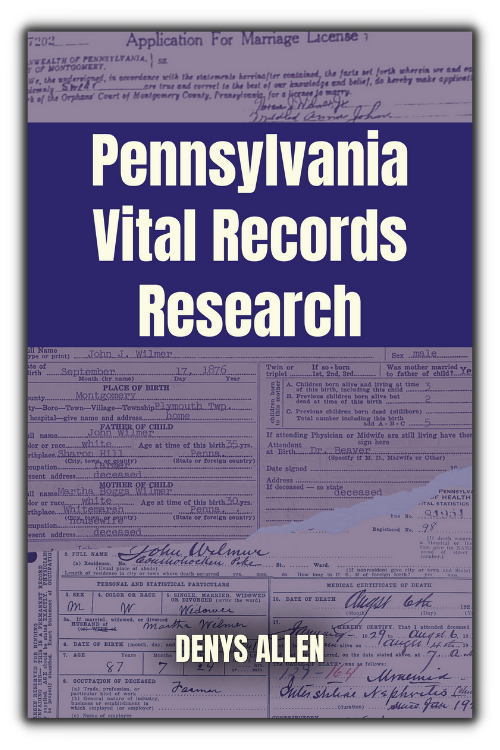Essential Guide to Vital Records Research in Pennsylvania
Discover the significance of vital records in Pennsylvania and learn effective strategies for utilizing them in your genealogy research.

A cornerstone resource in genealogy research is vital records. These records, which include birth, death, and marriage records, provide valuable information about our ancestors and their major life events.
In this comprehensive guide, we will explore the different types of vital records, their significance for genealogy research, and effective strategies for utilizing them to uncover hidden stories from the past.
Understanding Vital Records
Vital records are official documents created by state and local county governments to record significant life events. In the context of genealogy research, these records provide valuable information that help us piece together our family history.
Today, the state of Pennsylvania, for example, creates birth and death certificates, while marriage licenses are issued by local county governments. In the 19th century, the county issued all three types of vital records. Each of these records contains important information that can shed light on our ancestors' lives and connections.
Birth Records
Birth records are created at each person's birth. They typically include the individual's full name, date and place of birth, parents' names and birth place, and additional details such as the attending physician and number of siblings. Birth records are particularly useful for tracing family lines, confirming relationships, and determining the origins of our ancestors.
Learn more about Pennsylvania birth certificates in this article: Pennsylvania Birth Certificates: Key Details for Genealogists
Death Records
Death records, as the name suggests, document an individual's death and provide essential details such as the date, place, and cause of death. These records also include the deceased person's full name, age at the time of death, and the names of their parents, spouse, or children. Death records are invaluable for genealogy research as they help establish timelines, locate burial sites, and uncover potential connections to other family members.
Learn more about Pennsylvania death certificates in this article: The Importance of Death Certificates in Genealogical Research.
Marriage Records
Marriage records are another vital resource for genealogists, offering insights into our ancestors' unions. These records typically include the names of the bride and groom, the date and location of the marriage, and the names of their parents. Marriage records can help us identify the religions of our ancestors, and uncover previously unknown relationships between different branches of our family tree.
Learn more about Pennsylvania marriage records in this article: Marriage Licenses in Pennsylvania: A Comprehensive Guide for Genealogy Research

The Significance of Vital Records for Genealogy Research
Vital records play an essential in genealogy research, providing tangible evidence of our ancestors' existence and the milestones they experienced. We are able to bookend each person's life.
By accessing and analyzing these records, we can also gather valuable information that helps us construct accurate family trees, confirm relationships, and gain a deeper understanding of our family's history.
Here are a few reasons why vital records are essential for genealogy research:
Establishing Lineage: Vital records provide concrete evidence of familial relationships, helping us establish accurate lineages and connect individuals across generations. Birth and marriage records, in particular, are crucial for tracing family lines and confirming ancestral connections.
Verifying Information: While vital records are not immune to errors, they often contain verified information such as names, dates, and places. By cross-referencing multiple records and corroborating details, we can ensure the accuracy of our research and avoid jumping to incorrect conclusions.
Uncovering Hidden Stories: Vital records can reveal fascinating stories and shed light on previously unknown aspects of our ancestors' lives. For example, a death certificate may provide insights into a family's migration patterns, while a marriage record might uncover a surprising intercultural union.
Locating Additional Records: Vital records often provide crucial details that can lead us to other valuable sources of information. For instance, a birth record may mention the attending physician, providing a clue to explore medical records or local newspapers for further insights.

Vital Record Research Tips
As with any historical records, vital records come with their own set of challenges and potential discrepancies. It is crucial to approach them with a critical eye and employ effective research strategies to overcome these obstacles.
Here are some tips to help you navigate vital record research:
Make a Table of Conflicting Information
When dealing with conflicting information found in vital records, creating a table can be a helpful tool. Take note of the discrepancies and analyze them closely. Consider the magnitude of the differences, possible explanations, and any additional information that could shed light on the situation. This systematic approach will help you better understand the inconsistencies and guide your further research.
Use a Map to Locate the Family
Mapping the locations mentioned in vital records can provide valuable insights, especially when researching unfamiliar areas. Plotting the cemetery, place of death, the residence of the informant, and other relevant locations on a map can help you visualize the spatial relationships and identify potential patterns. This technique can be particularly useful for identifying migration routes, determining proximity between family members, and uncovering new leads for research.
Vital Records: Changes over Time
It's important to note that vital records have evolved over time, with each state having its unique characteristics and processes. Pennsylvania, like other states, has undergone changes in its vital record-keeping practices. Familiarizing yourself with these changes is crucial to ensure you are looking in the right places and utilizing the correct resources based on the time period you are researching.
My book Pennsylvania Vital Records Research covers all of the state's records created for adoption, birth, death, and divorce from 1682 to today. If you are doing in-depth research, the facts and checklists will save you dozens of hours of time searching.

While it would be ideal to have complete vital records from the early days of Pennsylvania's history, the reality is that some records may be missing or incomplete. However, there are numerous alternative sources that can serve as substitutes for these exact records. By exploring census data, church records, newspapers, and other archival sources, you can fill in the gaps and create a more comprehensive picture of your ancestors' lives.
Conclusion
Vital records are invaluable resources for genealogy research, providing a wealth of information about our ancestors' births, deaths, and marriages. By utilizing these records effectively and employing research strategies such as creating tables of conflicting information and mapping locations, we can overcome challenges and make many discoveries about our ancestors.
© 2019–2023 PA Ancestors L.L.C. and Denys Allen. All Rights Reserved.
